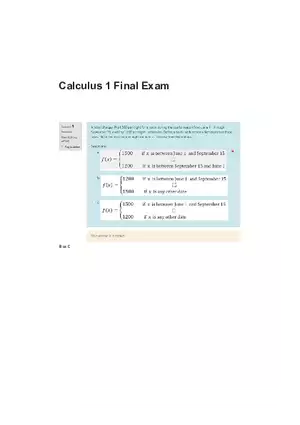Answer Key
Questions and Answers #7 Limits and Continuity
-
University:
Stanford University -
Course:
MATH 21 | Calculus Academic year:
2023
-
Views:
29
Pages:
10
Author:
MathPaladin
Related Documents
- Homework 5: Distributions And Random Variables
- Sec 3: Partial Fractions
- Sec 3: Coordinate Geometry
- Simultaneous Linear Inequality
- Power Functions, Polynomials, Remainder And Factor Theorem
- Joint Probability, Poisson Distribution, Conditional Probability
- Further Trigonometric Functions and Differentiation
- Trigonometric Functions And R Formula
- Linear Law, Parabolas And Circles
- Binomial Theorem And Coordinate Geometry
- Partial Fractions And Modulus Functions
- Differentiation And Integration
- Coordinate Geometry
- Finance Assignment #1
- Standard Form
- Application Of Integration
- Homework 1: Combinatorial Problems
- Sec 3: Surd
- Answer To Statistic Question
- Answer Number 1 And 2 Statistical Material
Questions and Answers #7 Limits and Continuity










Recommended Documents
Get your assignment done in just 3 hours. Quick, easy, and available 24/7.
New Documents from this Course
Report
Tell us what’s wrong with it:
Thanks, got it!
We will moderate it soon!
Report
Tell us what’s wrong with it:
Free up your schedule!
Our EduBirdie Experts Are Here for You 24/7! Just fill out a form and let us know how we can assist you.
Take 5 seconds to unlock
Enter your email below and get instant access to your document












